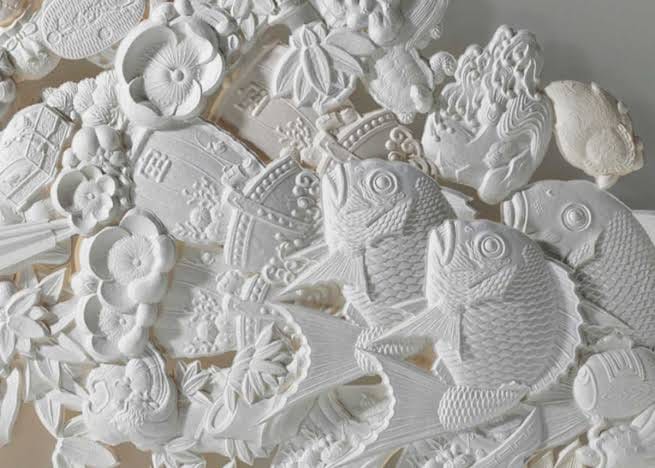The Enduring Legacy of Washi - Unraveling the Secrets of Japan's Ancient Paper

The Timeless Tradition of Washi Paper
Washi paper has been an integral part of Japanese culture for over 1,300 years, weaving its way through the country's history and becoming an iconic symbol of tradition and craftsmanship.
Ancient Origins
Washi paper is made from the inner bark of the gampi tree, mitsumata shrub, or paper mulberry bush. The labor-intensive process of harvesting and processing the bark has remained largely unchanged since its inception, with skilled artisans dedicating years to perfecting their craft.
Unparalleled Quality
Washi is highly valued for its durability, strength, and texture. Its unique composition makes it resistant to aging, allowing it to remain strong and supple for centuries. The texture of washi paper is often described as delicate yet robust, making it perfect for a variety of applications, from traditional art forms to modern design.
The Art of Washi Papermaking
Washi paper, a traditional Japanese paper, has been a cornerstone of Japanese culture for centuries. The art of washi papermaking is a labor-intensive process that requires great skill and attention to detail.
A Timeless Tradition
Washi paper is made by hand using traditional techniques that have been passed down through generations. The process involves pounding, screening, and drying the fibers to create a strong and translucent paper.
A Labor of Love
Only a few hundred families in rural villages continue to make washi in the traditional way. These skilled artisans dedicate their lives to preserving this ancient craft, often working in challenging conditions to produce this exquisite paper.
A Delicate Process
The washi papermaking process is delicate and requires great care. The fibers, typically from the bark of the mulberry tree, are pounded to break down the cellulose and create a pulp. The pulp is then screened and dried to create the final product.
A Legacy Worth Preserving
The art of washi papermaking is a significant part of Japan's cultural heritage. Efforts are being made to preserve this traditional craft and pass it on to future generations. By supporting washi artisans and learning about this ancient craft, we can help ensure its survival.
Washi in Modern Times
Despite Japan's rapid modernization, washi remains an integral part of Japanese culture, continuing to inspire and influence various aspects of modern life. This ancient paper's enduring legacy can be seen in its persistent use in traditional arts, as well as its adaptation in contemporary applications.
Traditional Arts
Washi continues to play a vital role in traditional Japanese arts, such as:
- Origami: The art of paper folding, which has become a symbol of Japanese culture, relies heavily on washi paper.
- Shodou: Japanese calligraphy also uses washi paper, which is prized for its texture and durability.
- Ukiyo-e: This traditional form of Japanese woodblock printing often features washi paper.
Modern Applications
Washi's unique properties and aesthetic appeal have led to its adoption in various modern fields, including:
- Design: Washi paper is used in interior design, product design, and graphic design, where its texture and translucency are prized.
- Architecture: Washi paper is used in traditional Japanese architecture, as well as modern buildings, where it is valued for its durability and sustainability.
As washi continues to evolve and adapt to modern times, its significance in Japanese culture remains unwavering. This ancient paper's legacy serves as a testament to the enduring power of tradition and the importance of preserving cultural heritage.
The Unique Characteristics of Washi
Washi, Japan's ancient paper, has been a cornerstone of the country's cultural heritage for centuries. This extraordinary material boasts a multitude of unique characteristics that have captivated artisans, craftspeople, and enthusiasts alike. Let's delve into the remarkable properties that make washi truly special.
Unparalleled Durability
Washi is renowned for its exceptional durability, with some examples lasting for centuries. This is due to the unique composition of the paper, which is made from the fibers of the mulberry plant (kozu) or bamboo. The long fibers used in washi production provide remarkable strength and resilience, making it an ideal material for preserving valuable documents, artworks, and cultural artifacts.
Eco-Friendly and Sustainable
In an era where environmental concerns are paramount, washi stands out as an eco-friendly and sustainable material. The production process involves minimal chemical treatment, and the raw materials used are biodegradable and renewable. This makes washi an attractive choice for those seeking environmentally responsible alternatives to modern paper products.
Distinctive Texture and Translucency
One of the most striking features of washi is its unique texture and translucency. The paper's delicate, almost ethereal quality makes it perfect for various applications, from traditional Japanese lanterns to intricate cut-out designs. The translucency of washi also allows for beautiful layering effects, adding depth and visual interest to artworks and crafts.
Preserving the Legacy of Washi
Washi, Japan's ancient paper, has been a cornerstone of the country's cultural heritage for centuries. Efforts are being made to preserve the traditional techniques of washi papermaking, ensuring its legacy endures for generations to come.
Traditional Techniques Live On
Ozu Washi, a company established in 1653, continues to produce high-quality washi paper using methods passed down through generations. Skilled artisans meticulously craft each sheet, embodying the spirit of washi's rich history.
Government Recognition
The Japanese government has also recognized washi as an important intangible cultural asset, acknowledging its significance in the country's cultural identity. This recognition has sparked initiatives to safeguard washi's traditional production methods and promote its value worldwide.
Preservation Through Innovation
Innovative approaches are being explored to preserve washi's legacy, such as integrating traditional techniques with modern applications. This fusion ensures washi remains relevant, enabling its unique qualities to be appreciated by new audiences.
Education and Community Engagement
Workshops, exhibitions, and cultural events are being organized to educate the public about washi's history, production process, and cultural significance. Community engagement initiatives encourage participation in washi-making, fostering a sense of ownership and ensuring its legacy continues.














Comments ()